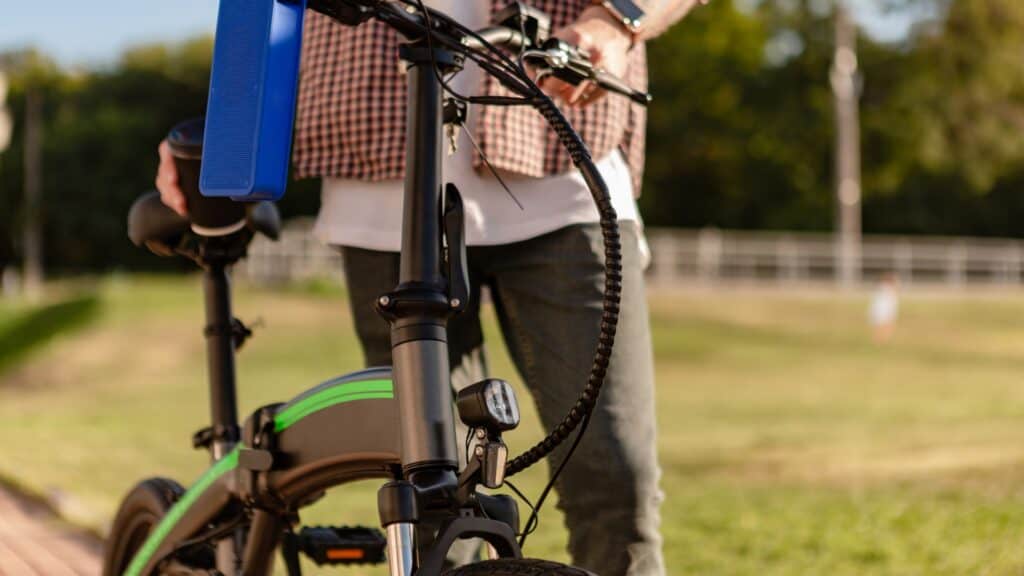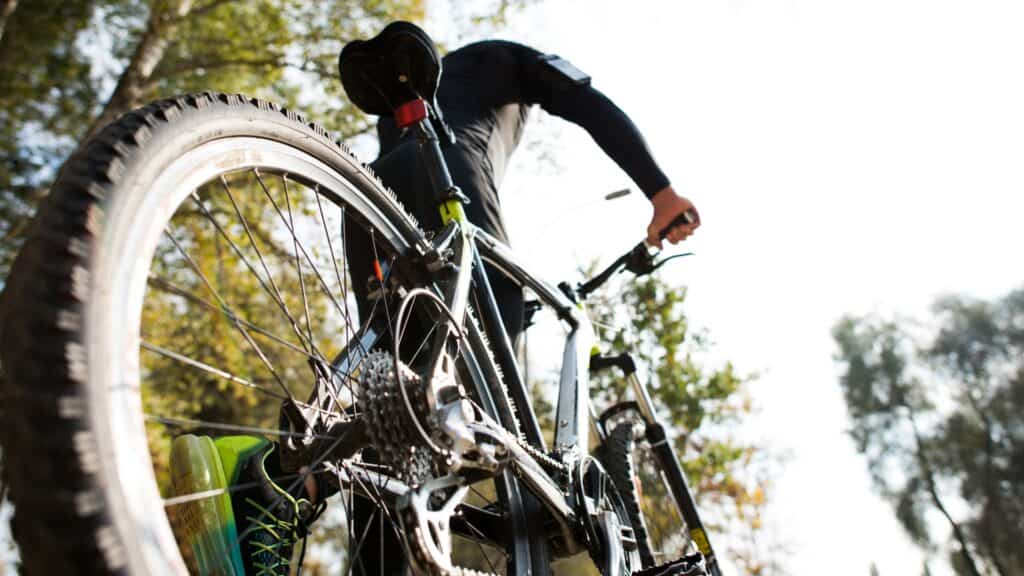Cyclists often encounter the frustrating ordeal of punctured tyres, disrupting their rides and leading to unnecessary hassles.
To avoid constant punctures during your rides, prioritize proper tyre maintenance. Keep tyre pressure optimal for your weight and terrain, typically 8-9 bar for road cyclists. Regularly check tyres for wear and replace when needed. When changing tubes, ensure they aren’t pinched between rim and tyre. Lastly, inspect for thorns to prevent future punctures.
In this guide, we delve into effective strategies to tackle tyre troubles, offering a detailed roadmap based on expert insights.

1. Understanding the Issue
- Highlight the common problem faced by cyclists: snakebite punctures with two holes.
- Emphasize the significance of identifying the root cause to implement effective solutions.
2. Optimizing Tyre Pressure
- Stress the importance of maintaining optimal tyre pressure for riders of all weights.
- Provide specific pressure recommendations for road bikes (8-9 bar) to minimize the risk of punctures.
- Explain how inadequate pressure increases vulnerability to punctures, especially when encountering road obstacles.
3. Ensuring Tyre Condition
- Advocate for regular inspection of tyre condition to prevent premature wear and tear.
- Advise against riding with weathered or worn tyres, as they heighten the risk of punctures.
- Highlight the importance of adequate tread depth and absence of damage for optimal tyre performance.
4. Proper Tube Installation
- Discuss the significance of correctly installing tubes to prevent pinching between the rim and tyre.
- Explain how pinched tubes can lead to repeated punctures, necessitating meticulous attention during installation.
- Provide step-by-step instructions for ensuring proper tube installation, including alignment and inflation.
5. Thorough Thorn Checks
- Stress the importance of inspecting the tyre for any remaining thorns or debris after replacing a punctured tube.
- Highlight the consequences of overlooking this step, leading to immediate re-puncturing due to residual foreign objects.
- Provide practical tips for conducting thorough thorn checks, including visual inspection and tactile examination.
Mastering tyre maintenance is essential for cyclists seeking to enjoy smooth and uninterrupted rides.
Electric bikes have taken South Africa by storm.
We find out if this is the way of the future in terms of our cycling training and racing.
Can it benefit the athlete in any way?
To assess the role of electric bikes in cycling training, it’s crucial to understand their potential benefits and limitations.

Can Electric Bikes Be Used As A Training Tool?
Racing Perspective
- Not Ideal for Racing: Electric bikes, being motorized, remove the athletic element from racing. They are unlikely to become a primary mode of racing bikes due to this factor.
Coaching Perspective
- Beneficial for Coaching: From a coaching standpoint, electric bikes offer significant advantages. Coaches can use them to pace top athletes during training rides, especially when keeping up with elite riders becomes challenging.
Market Trends
- Rising Popularity: Electric bikes are gaining popularity globally, primarily for commuting purposes. While they are still relatively expensive, they are gradually making their way into the South African market.
Training Tool Debate
- Limited Training Utility: While some argue that electric bikes could serve as training tools, their motorized systems raise concerns about maintaining proper training intensity.
- Potential Use Cases: In specific scenarios, such as hill repeat sessions, athletes might utilize electric bike assistance to reach the top of a climb after completing intervals. However, maintaining pedal power output remains essential for effective training.
Mechanical Doping: A Concern?
- Testing Measures: Mechanical doping, though less prevalent than traditional doping, remains a concern in cycling.
- Recent Developments: Testing measures, such as those implemented at the Tour de France, aim to detect mechanical doping. While no instances were reported, ongoing vigilance is necessary to prevent its proliferation.
Electric bikes offer intriguing possibilities for coaching and commuting purposes. However, their utility as training tools for athletes remains debatable due to concerns about maintaining training intensity.
As the cycling community navigates evolving technologies, vigilance against potential abuses, including mechanical doping, remains paramount for upholding the integrity of the sport.
Choosing the right mountain bike can significantly impact your riding experience, especially when considering factors like comfort, speed, and terrain suitability.
Let’s delve into the debate between dual suspension and hardtail bikes to help you make an informed decision…

Exploring Mountain Bike Options: Dual Suspension vs. Hardtail
Key Considerations
Rider Preferences
- Comfort vs. Speed: Determine whether you prioritize a comfortable ride for longer excursions or crave speed and agility for shorter, more intense races.
Terrain and Riding Style
- Technical Challenges: If you frequently tackle technical trails with rocky climbs and descents, traction and stability become crucial factors to consider.
- Weight Advantage: In races where every ounce matters, the lightweight design of a hardtail bike can provide a competitive edge, especially during climbs and sprints.
Pros and Cons
Dual Suspension
- Comfortable Cruising: Enjoy a smoother ride, minimizing the impact of bumps and vibrations during extended trail sessions.
- Enhanced Traction: Dual suspension bikes excel on rough terrain, offering superior traction and control, particularly on technical climbs and descents.
Hardtail
- Agility and Responsiveness: With a simpler design and lighter frame, hardtail bikes are more agile and responsive, ideal for quick maneuvers and bursts of speed.
- Speed-Focused: Suited for shorter races and aggressive riding styles, where maintaining speed and momentum is paramount.
Personal Perspectives
- Expert Insights: Experienced riders often provide valuable insights into the practical benefits of each bike type, offering perspectives shaped by their own riding preferences and experiences.

Making the Decision
When it comes to selecting between dual suspension and hardtail bikes, there’s no one-size-fits-all answer. It ultimately boils down to your individual riding style, preferences, and the type of terrain you frequent. Exploring both options at a local bike shop and test riding them on familiar trails can provide firsthand experience to inform your decision.
Whether you’re seeking the plush comfort of a dual suspension ride or the nimble agility of a hardtail, both mountain bike variants have their merits. By carefully weighing the pros and cons and aligning your choice with your riding goals, you can embark on your mountain biking adventures with confidence, knowing you’ve chosen the bike that best suits your needs.



Comments are closed.